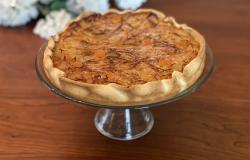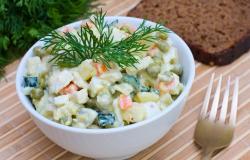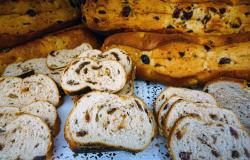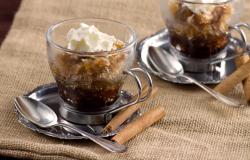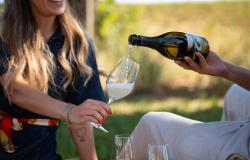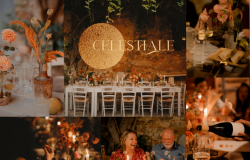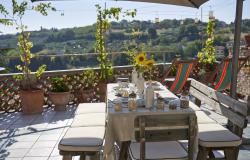Quince Paste (Cotognata)
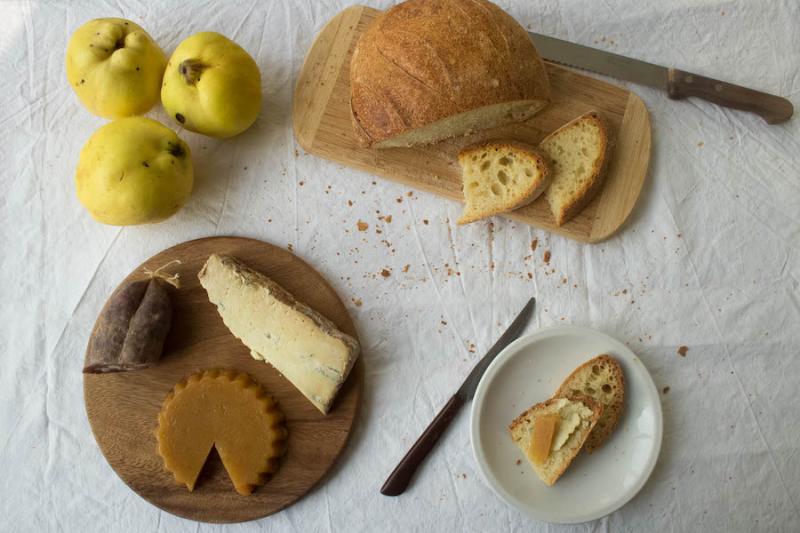
One autumn morning several years ago, I found myself at my local market in Turin admiring a crateful of bulbous pale yellow-green fruits covered in a sparse yet downy brown beard. With their obvious resemblance to the smoother apples and pears in the neighbouring crates, I realised that I had come across the quinces that were once so beloved by the ancient Romans and in Italian medieval and Renaissance cookery. An exchange with the market vendor confirmed my hunch.
“Si, sono le mele cotogne (Yes, they are quinces),” he said.
Perceiving my relative ignorance in all things quince-related, he added, “Non sono comestibili crude. Devi cucinarle prima di mangiarle (They're not edible raw. You need to cook them before eating them).”
Conscious of the other customers waiting, I bought them impulsively along with my usual autumn haul of fennel, leeks and valerian salad. And, as soon as I got home, I set out to research how I could cook this ancient fruit Italians past and present were so enthusiastic about.
A recipe from a Sicilian cookbook for cotognata, quince paste, immediately caught my eye. A modest treat today, this preserve, with its high sugar (an extremely expensive commodity at the time) content, was very much a status symbol and luxurious banquet item in medieval Sicily. The nuns who traditionally boiled these knobbly fruits down to a firm and aromatic paste would often leave them to set in terracotta moulds with crests or religious symbols on them. Intrigued by this preserve that didn't require tranferring scolding hot jam into equally scorching sterilised jars, I decided to give this recipe a go. I've been making cotognata every autumn ever since.
Just a few notes on preparing this paste. Many recipes will tell you to peel, core and quarter the quinces in their raw, lip-puckeringingly astringent state and I used to oblige. Recently though, a friend of mine showed me a less painstaking method; simply boil the quinces whole until tender and then peel, core and quarter them. Much easier than trying to work with their hard raw flesh!
As a substitute for the traditional terracotta moulds, any non-stick or silicone moulds work well. I used my non-stick tartlet tins which gave my cotognata a flower-like shape. And just for the record, they had a diameter of 12 cm and a depth of 2 cm. I also made sure that I did not exceed 1.5 cm in depth when pouring the boiled down quince puree into them.
With regards to serving, it's common for visitors to Sicilian households be served pieces of the set cotognata rolled in sugar as an afternoon treat or dessert. I also quite like the Spanish way of serving membrillo, cotognata's equivalent in the Iberian peninsula, where it is often paired with Manchego cheese. Both options work wonderfully!
Place washed quinces in a large, heavy-bottomed saucepan, cover with just enough water and bring to boil. Leave to simmer over low to medium heat until the fruit is tender (about half an hour). Remove fruit from saucepan, drain in a pasta colander and leave to until cool enough to handle. Cut boiled quinces into quarters and remove their peels, cores and seeds. Pass the remaining pulp through a food mill in small batches until obtaining a puree.
Weigh puree and add exactly half the amount of sugar (I generally get 900 g – 1 kg of puree from 1.5 kg of quinces, so you'll need 450 - 500 g sugar) plus the juice of 1 lemon. Transfer mixture (plus bay leaf, if using) to a heavy bottomed saucepan and cook on low to medium heat. Simmer and stir constantly, it will turn a gorgeous russet as it boils down. The mixture is ready when the mixture has thickened noticeably and comes away from the sides of your saucepan as you stir (about 1 hour).
Remove bay leaf (if using) and pour quince paste into very lightly oiled moulds to a depth not exceeding 1.5 cm. Smooth out the top of the paste with a spatula and place in an oven heated at 80 ° C. Bake for 1 hour or until the paste is set and firm to touch. Cool to room temperature, cover and leave to sit overnight to complete the setting process.
Remove paste from moulds when completely firm and set. Wrap pieces of quince paste in plastic wrap and store in refrigerator. Consume within 6 months. Remove paste from the fridge 1 hour before serving. Serve as a sweet (cut into cubes rolled in sugar, if desired) or as an appetiser to accompany cured meats and sharp cheeses.

